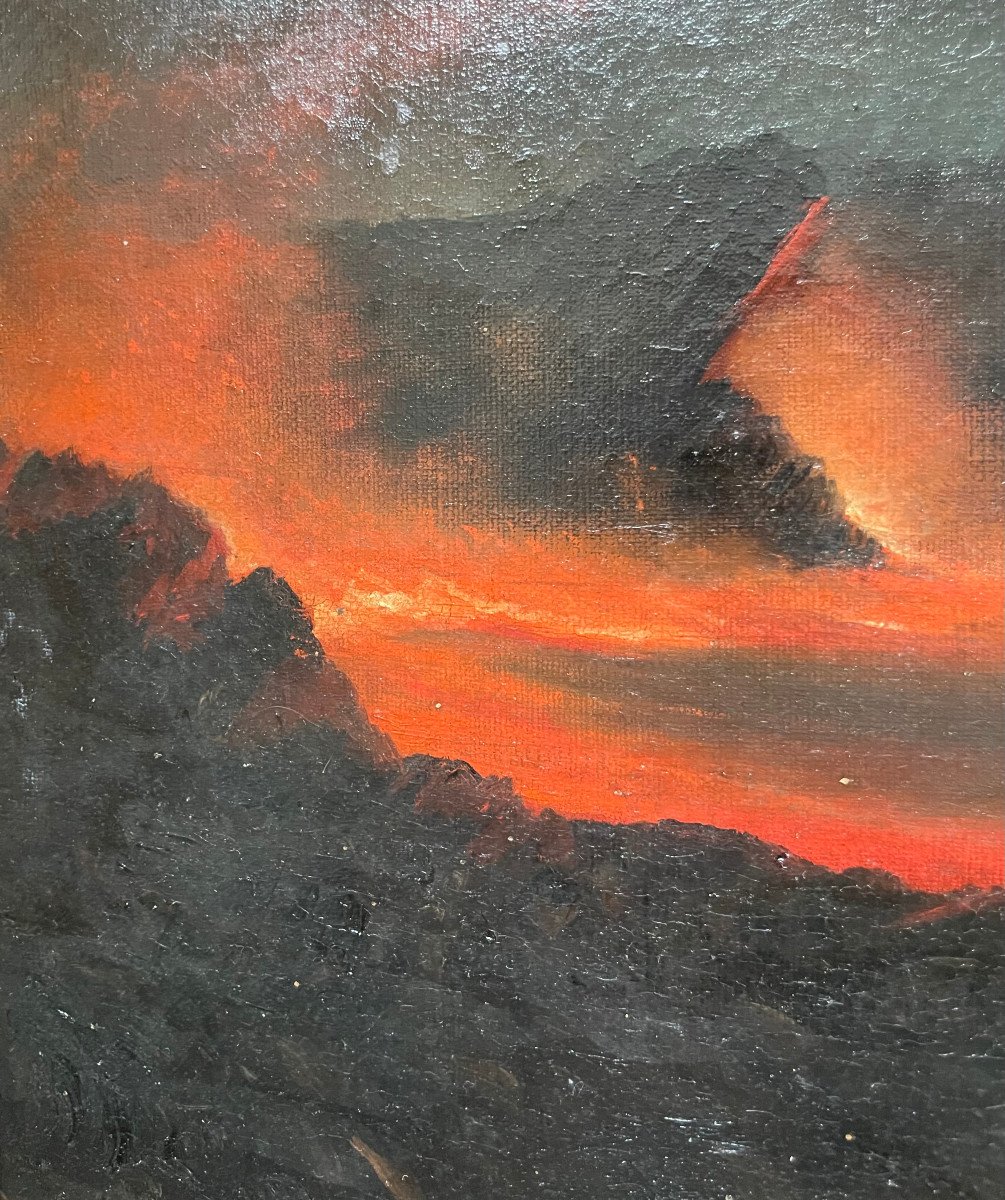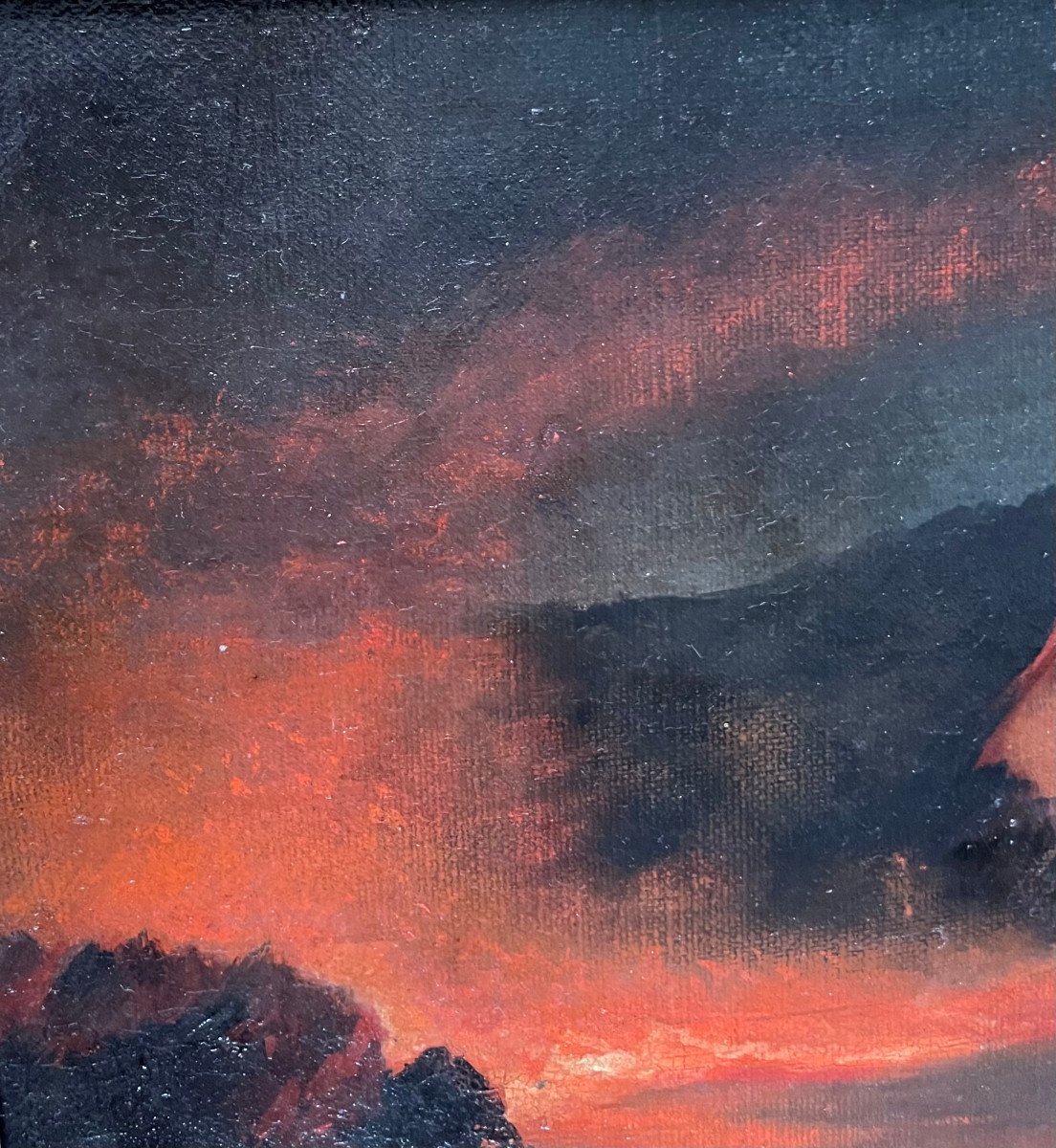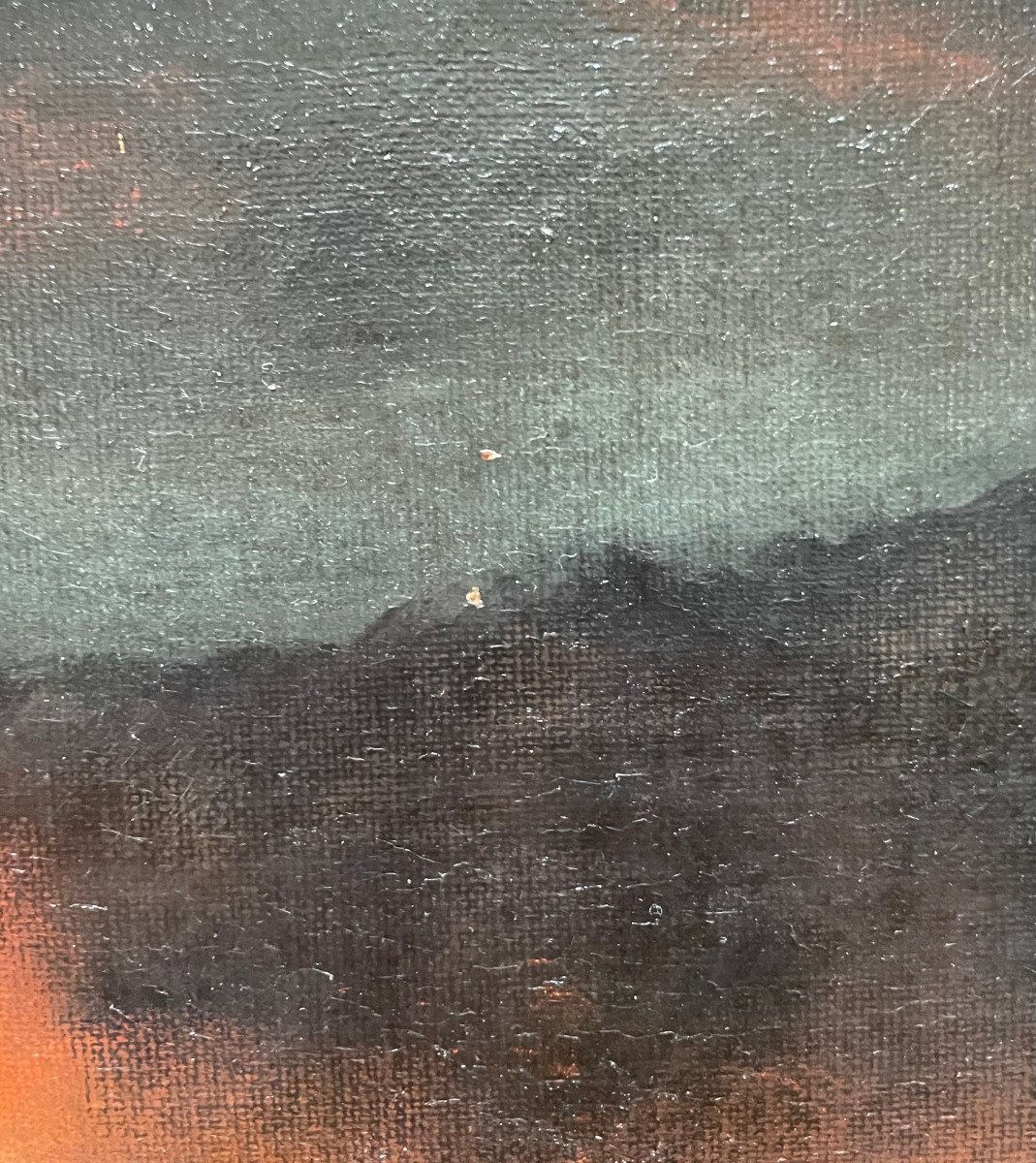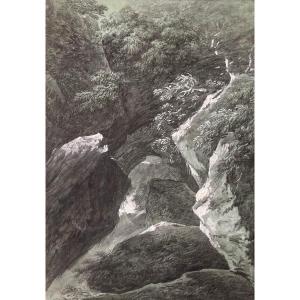View of the Mauna Loa Crater, Hawaii
Circa 1890-1900
Oil on canvas
30 x 46 cm canvas
36 x 51 cm frame
Inscribed "Roa Mowna" lower right (Mowna Roa is the Hawaiian name for the Mauna Loa volcano, meaning "long mountain").
Antique gilded wood frame, late 19th century.
Original canvas, we note two tiny losses at the top and center of the composition.
Gilded wood frame, 19th century.
Like the Barbizon School in France and the Hudson River School in the United States - communities of artists with diverse destinies and fortunes, but sharing a common passion for the representation of nature - the Hawaiian Volcano School is a generation of painters, mostly non-Hawaiian, who, in the late 19th century, represented the island and its erupting volcanoes in a manner that oscillated between naturalism and a dramatic, almost romantic vision. In the 19th century, the emergence of Hawaiian tourism was inextricably linked to volcanic phenomena, some of which were intense and spectacular. Indeed, between 1880 and 1890, Manau Loa erupted, devastating the town of Hilo below. This event helped attract many foreign travelers, including painters fascinated by the representation of the eruptive phenomenon.
Ogura Yonesuke Itoh was a Japanese-American artist born in Japan in 1870. At the age of 25, he landed illegally in Hawaii and hid from the authorities in the Punchbowl crater. He then became a painter and member of the Volcano School. Still relatively unknown today, his paintings were long confused with those of the French painter Jules Tavernier (1844-1989), some of whose compositions are close. Indeed, Tavernier can be considered the true leader of this school since he was very successful with Hawaiian customers and trained a large number of students in the 1880s. Itoh left many of his paintings unsigned, perhaps because he was in Hawaii illegally.






























 Le Magazine de PROANTIC
Le Magazine de PROANTIC TRÉSORS Magazine
TRÉSORS Magazine Rivista Artiquariato
Rivista Artiquariato
